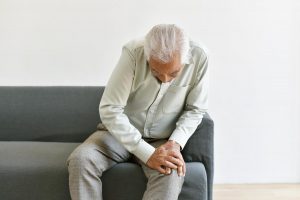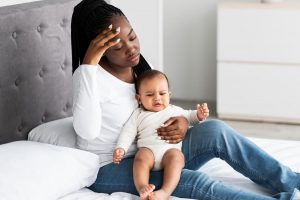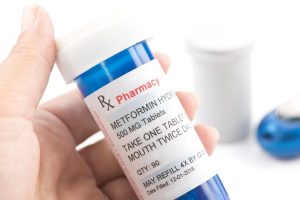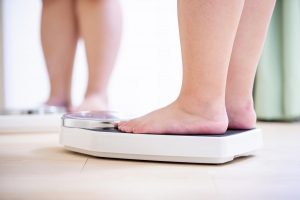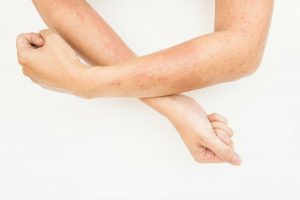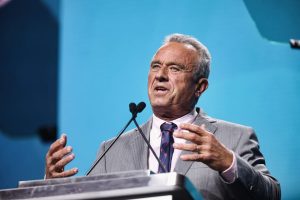As many states began to reopen their economies on Monday, a new internal report from the Trump administration predicts that will come at a cost: There will be 200,000 new coronavirus cases and 3,000 deaths every day by the end of May.
Those projections, based on data collected by various government agencies, are way up from the current levels of 30,000 new cases and 1,750 deaths a day, The New York Times reported.
Troubling predictions came from more than one source on Monday: A forecasting model from University of Washington researchers also raised its projections to more than 134,000 American deaths from COVID-19 by early August, the Times reported.
That’s a doubling from the 60,000 total deaths that was previously predicted, an increase that the researchers said partly reflects “changes in mobility and social distancing policies,” the Times reported.
All of the numbers illustrate a grim fact: Even though the country has essentially been in lockdown for the past seven weeks, the coronavirus prognosis hasn’t really changed.
Still, 27 states had loosened at least some social distancing restrictions by Monday, a new Kaiser Family Foundation analysis shows, the Times reported. But only 20 of those states meet the reopening criteria from the Trump administration. The remaining seven — Indiana, Iowa, Kansas, Minnesota, Mississippi, Nebraska and Wyoming — are still showing increases in daily infections and positive tests, the Times reported.
Even as reopening plans proceed, a new poll shows that Americans oppose the reopening of restaurants, retail stores and other businesses.
The Washington Post-University of Maryland survey, released Tuesday, found that many Americans have been making trips to grocery stores and 56 percent say they are comfortable doing so. But 67 percent say they would be uncomfortable shopping at a retail clothing store, and 78 percent would be uncomfortable eating at a sit-down restaurant. People in states with more relaxed restrictions report equal levels of discomfort as those in states with tougher restrictions, the Post reported.
More testing needed
Meanwhile, a new analysis finds inadequate levels of testing for the coronavirus in 60% of states, many of which are reopening after weeks of lockdown.
The analysis, conducted by the Associated Press, uses a 2% testing rate per month — a rate advised by federal officials that many public health experts still feel falls short.
In a recent White House briefing, officials said each state would receive enough testing materials to test 2.6% of their populations in both May and June. Representatives of the U.S. Department of Health and Human Services also offered another number — 2% — without explaining the reason for the discrepancy between the two rates.
But according to the AP analysis, right now just 40% of states can even meet the lower 2% threshold for testing. The news agency’s analysis is based on data on the average number of new daily tests conducted over the past seven days in a particular state. Data comes from the COVID Tracking Project and includes numbers up to April 30.
Many states that are either already reopening businesses or plan to soon — Colorado, Florida, South Carolina, Texas and Georgia — have not met the 2% testing threshold, the AP analysis finds.
U.S. coronavirus cases passed 1.1 million on Tuesday as the death toll neared 69,000, according to the Times.
There has been one note of good news: On Friday, the U.S. Food and Drug Administration approved emergency use of the first drug that seems to boost recovery among COVID-19 patients.
Promise of remdesivir
Remdesivir, Gilead Sciences’ intravenous antiviral medication, is to be used for hospitalized patients with “severe disease,” such as those who need supplemental oxygen or ventilators to breathe, the AP reported.
“This was lightning speed in terms of getting something approved,” FDA Commissioner Stephen Hahn said during a media briefing Friday, calling the drug “an important clinical advance.”
The agency based its decision on the results of a government study that showed remdesivir shortened the time to recovery by 31% for COVID-19 patients in the hospital, the AP reported.
The search for a vaccine also got some welcome news. On Thursday, the White House announced an initiative that hopes to produce a COVID-19 vaccine that could be available nationwide by January.
President Donald Trump said it is not too optimistic to try to produce roughly 300 million doses of vaccine in eight months, enough for all Americans, the Washington Post reported.
“No, I’m not overpromising. I don’t know who said it, but whatever the maximum is, whatever you can humanly do, we’re going to have. And we hope we’re going to come up with a good vaccine,” Trump said during a coronavirus task force briefing Thursday.
A vaccine for all by January?
Even the shorter timeline still means there would be no full protection from the new coronavirus until after most Americans are likely to have returned to work or school.
Dubbed “Operation Warp Speed,” the goal is to produce hundreds of millions of doses by January, Dr. Anthony Fauci, the nation’s top infectious diseases expert, said Thursday.
“We want to go quickly, but we want to make sure it’s safe and it’s effective,” he said on the “Today” show. “I think that is doable if things fall in the right place.”
That’s likely welcome news to the millions of businesses that have had to shut down or curtail operations during six weeks of stay-at-home orders, with 3.8 million Americans added to the nation’s jobless rolls on Thursday. That brings the total to more than 30 million newly unemployed, the Times reported.
Social distancing orders remain a patchwork across the United States. Governors in hard-hit New York and Michigan are keeping stay-at-home orders in place until at least mid-May, while many of their counterparts have already allowed certain businesses to reopen, the AP reported.
In preparation for a reopening in the coming weeks, New York Governor Andrew Cuomo has announced the state will implement the “most aggressive” antibody testing program in the country, CBS News reported.
He has also issued an executive order stating all New Yorkers must have a mask or mouth and nose covering when they are not maintaining social distancing in public, CBS News reported.
To reopen or not to reopen
Cuomo said Monday that New York must learn the lessons of the COVID-19 coronavirus pandemic even as it continues to fight it, CBS News reported.
Among those lessons: Acknowledge what you don’t know.
“Acknowledge and actualize that the truth is that nobody knows what happens next and when it happens,” Cuomo said. “So if you don’t know, say you don’t know.”
“When you know what you don’t know and admit it, it will actually keep you safe,” Cuomo said. “And that’s where we are. We don’t know, but we will be prepared for all possibilities.”
On Sunday, Cuomo announced the creation of a coalition of seven Northeastern states to buy personal protective equipment and medical supplies as a block in the future. New York will join New Jersey, Connecticut, Pennsylvania, Delaware, Massachusetts and Rhode Island to eliminate competition between them to drive down prices, Cuomo said during a press briefing, CBS News reported
“We can’t go through this day-to-day moving masks all across the state, this mad scramble that we were in and still are in, in many ways,” Cuomo said. “Also, as a nation, we can’t go through this again. There was competition among states, there was competition among private entities to get this equipment, the federal government was trying to buy it.”
Cuomo said the seven states will account for about $5 billion worth of medical supplies, which “will increase our market power when buying,” CBS News reported.
According to a Times tally, the top five states in coronavirus cases as of Tuesday are: New York with over 324,000 cases; New Jersey with over 128,000; Massachusetts with more than 69,000; Illinois with nearly 64,000; and California with more than 56,000.
Nations grapple with pandemic
In Asia, where the coronavirus first struck, several countries are finally returning to a new normal.
Chinese health officials said that Wuhan, the original epicenter of the pandemic in China, has no coronavirus patients in its hospitals.
South Korea and Hong Kong also appear to have curbed coronavirus for now: Last week, South Korea reported that for the first time since the virus’ Feb. 29 peak, there were no new domestic cases and only four travel-related ones. The story was similar in Hong Kong, which reported no new cases for five straight days, the Times said. The city had a resurgence in infections in late March that prompted strict lockdowns on travel, social distancing measures and the widespread adoption of work-from-home policies, the newspaper said.
Elsewhere the situation remains challenging. After publishing new numbers that now include deaths outside of hospitals, on Tuesday the United Kingdom posted 28,809 coronavirus-related deaths, the third-highest in the world according to a Johns Hopkins University tally. Britain has now surpassed Spain and France for COVID-19 deaths in Europe, with only Italy still ahead at 29,079 deaths.
Spain reported 25,428 COVID-19 deaths by Tuesday, despite signs the infection rate is slowing there, the Hopkins tally showed. While deaths in Italy remain high, numbers have leveled off there as well. Both countries are cautiously reopening their economies.
Brazil looks like it could become the next hotspot in the coronavirus pandemic. By Tuesday, the South American country had reported more than 7,360 deaths and over 108,000 confirmed infections, according to the Hopkins tally. But the true numbers are believed to be vastly higher.
Russia was also struggling to contain the spread of coronavirus, as the case count in that country passed 155,000 on Tuesday, the Hopkins tally showed. Moscow remains the most virus-stricken part of the country, but there are growing concerns that infections could surge in more remote regions with weaker health systems, the Post reported.
Worldwide, the number of reported infections passed 3.6 million on Tuesday, with nearly 252,000 deaths, according to the Hopkins tally.
More information
The U.S. Centers for Disease Control and Prevention has more on the new coronavirus.
Copyright © 2024 HealthDay. All rights reserved.














